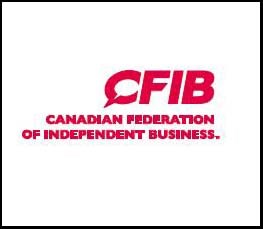The Canadian Federation of Independent Business (CFIB) has released its latest monthly Business Barometer®, which reveals optimism among small business owners in Saskatchewan gained ground again in February to an index of 57.7, up 2.7 points from 55.0 in January, but lags the national average index of 62.9.
“It is encouraging to see small business optimism in Saskatchewan gain almost three points and reach an index of 57.7 in February — its best reading in more than a year,” said Marilyn Braun-Pollon, CFIB’s Vice-President, Prairie & Agri-business. “However, only one-third of business owners say that their firms are in good shape, while a large share — 15 per cent — see their firms in poor shape.”
“Given the number of ongoing challenges facing Saskatchewan entrepreneurs, the worst thing the provincial government could do is hike taxes in the 2017 budget, which will further jeopardize our competitiveness,” added Braun-Pollon. “Instead, the government needs to continue to focus on implementing significant spending restraint.” In CFIB’s 2017 pre-budget survey, which asked entrepreneurs what options the Saskatchewan government should implement to balance the budget, 72 per cent of Saskatchewan small business owners support spending restraint (i.e. reducing the size of government through workforce attrition, freezing government wages, etc.). Fifty-six per cent support the province running a modest deficit in 2017-18 with a plan to balance its budget in 2018-19. Only 7 per cent of business owners believe the government should increase provincial taxes to collect additional revenue.
Canada’s small businesses are quite a bit more upbeat in February. The national index rose 2.7 points to 62.9 this month — its best reading since January 2015.
“The destabilizing effects of the oil price crunch on business confidence now appear mostly behind us,” said Ted Mallett, Chief Economist at CFIB. “This new, more optimistic outlook in the resource sector is reflecting a more balanced effect across the country, though this has yet to translate into a higher expectation of new full-time positions becoming available in the coming months.”
The improving perspectives in previously hard-hit Alberta (49.8) and Saskatchewan (57.7) has helped boost the index and is closing the confidence gap that opened up with the rest of the country when oil prices were depressed, although the numbers are still not quite back to normal mid-cycle levels.
Businesses are most upbeat in Manitoba and Quebec, with index levels at 66.9 and 66.6 respectively, however, optimism in the Maritimes, Ontario and BC are nearly as high--which suggests overall robustness returning to the economy. Businesses in Newfoundland & Labrador, however, remain pessimistic.
The industry picture also supports a page-turning on business prospects, with optimism rising in 11 of 13 sector groups. Resources sector owners are now the most upbeat with an index reading of 69.2, followed closely by those in the information (67.9) and wholesale (66.1) industries. Healthcare, transportation and retail industries are the most sluggish, but overall sector differentials are relatively small compared to past results. Results and the full report are available at: www.cfib-fcei.ca/english/barometer
Highlights of the Saskatchewan Business Barometer for February:
• 36 per cent of businesses in Saskatchewan say their overall state of business is good (40 per cent nationally); 15 per cent say it is bad (17 per cent nationally).
• 10 per cent of Saskatchewan businesses plan to increase full-time employment in the next 3-4 months (18 per cent nationally) and 12 per cent plan to decrease employment (12 per cent nationally).
• Insufficient domestic demand remains the main operating challenge (49 per cent), followed by shortage of skilled labour (25 per cent), and management skills/time constraints (18 per cent).
• Major cost pressures for small business include: tax, regulatory costs (49 per cent), wage costs (48 per cent) and insurance costs (46 per cent).



